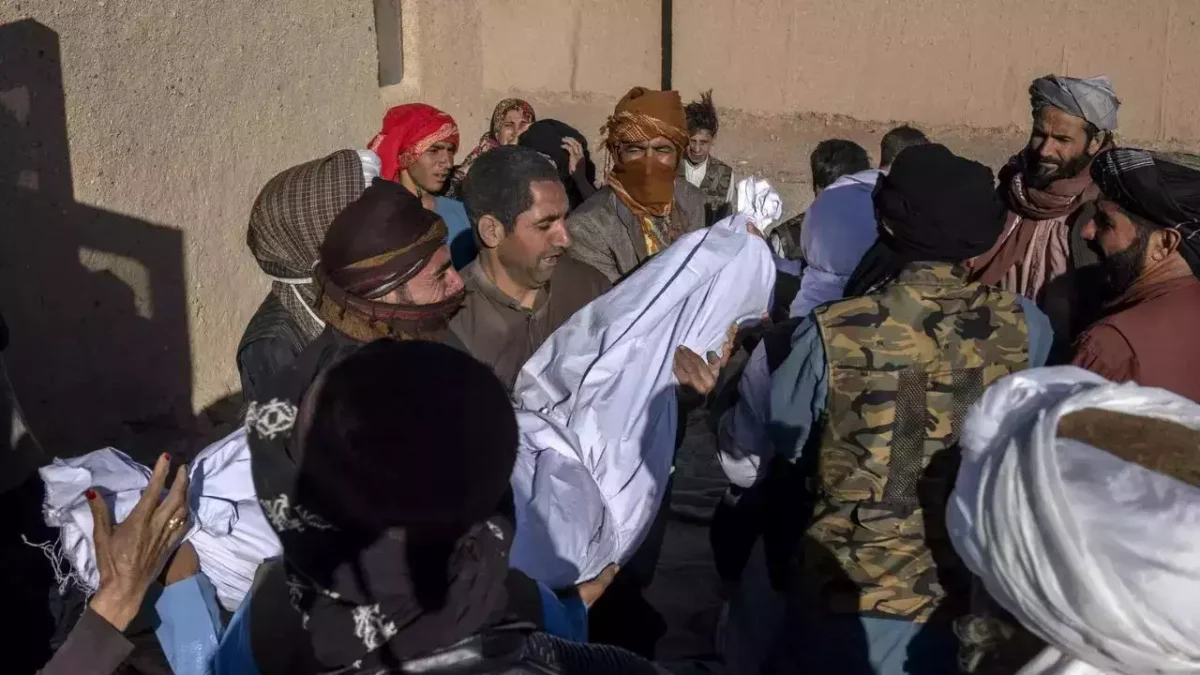“I can’t live here anymore. Our family was killed here. How could we live here?” These are the words of 40-year-old Mohammad Naeem, who lost 12 family members in a series of earthquakes that rocked western Afghanistan, leaving over 2,000 dead and thousands homeless. This article sheds light on the aftermath of these catastrophic events and the challenges survivors are now facing as winter approaches.
A String of Deadly Quakes in Afghanistan
On October 7th, western Afghanistan was struck by a series of devastating earthquakes that resulted in at least 2,000 casualties. The epicentre was located 40 kilometres northwest of Herat, the provincial capital. On October 11th, another 6.3-magnitude earthquake added to the region’s woes, causing further casualties.
Desperate Search for Survivors
In the wake of these calamities, Afghan rescuers and villagers have been tirelessly digging through rubble in Herat province, desperately seeking survivors. Tragically, they have also been preparing graves for the deceased in several areas. The worst-affected district, Zinda Jan, recorded 1,294 deaths and 1,688 injuries, with 485 individuals still missing. The destruction extended to six schools and nearly 2,000 houses across 20 villages.
Lack of Shelter and Aid
As winter looms, the survivors are confronted with an additional challenge – the need for shelter, food, and medical assistance. Aid organizations have voiced concerns about the scarcity of foreign aid reaching the region due to global attention being diverted elsewhere. Pakistan and China have pledged aid, but the response has been sluggish. In this dire situation, many Afghan citizens have initiated fundraising campaigns to support their fellow countrymen.
Taliban Government’s Response
The Taliban-led government, while dealing with its own set of challenges, has urged national and international entities to provide humanitarian aid to the province. The deputy prime minister for economic affairs, Abdul Ghani Baradar, visited the affected region and pledged immediate relief assistance, emphasizing the need for equitable distribution.
International Relief Efforts
The International Federation of Red Cross and Red Crescent Societies has called upon the international media not to forget Afghanistan’s plight and has urged the world to focus on the Afghan people’s stories of resilience and need. In neighbouring Pakistan, the government has held a special session to review aid for Afghanistan, including relief teams, food, medicine, tents, and blankets.

The Plight of Afghan Women and Children
The recent earthquakes have disproportionately affected women and children. According to UNICEF, more than 90% of the casualties were women and children. Afghanistan’s healthcare system, already strained due to the country’s unstable situation, has been overwhelmed by the influx of injured citizens.
The Challenge of Rebuilding
Afghanistan is no stranger to earthquakes, but the destruction caused by this series of quakes has been devastating. Most of the homes in rural Afghanistan are made of mud and lack proper reinforcement, leaving them susceptible to collapse during seismic events. Furthermore, with the withdrawal of foreign aid following the Taliban’s return to power, the country is grappling with a dire humanitarian crisis, compounding the challenges faced by survivors.
As Afghanistan braces for a harsh winter, the immediate need for shelter, food, and medical assistance remains critical. The world’s attention and aid are essential to help the Afghan people rebuild their lives and communities in the face of these tragic events.



